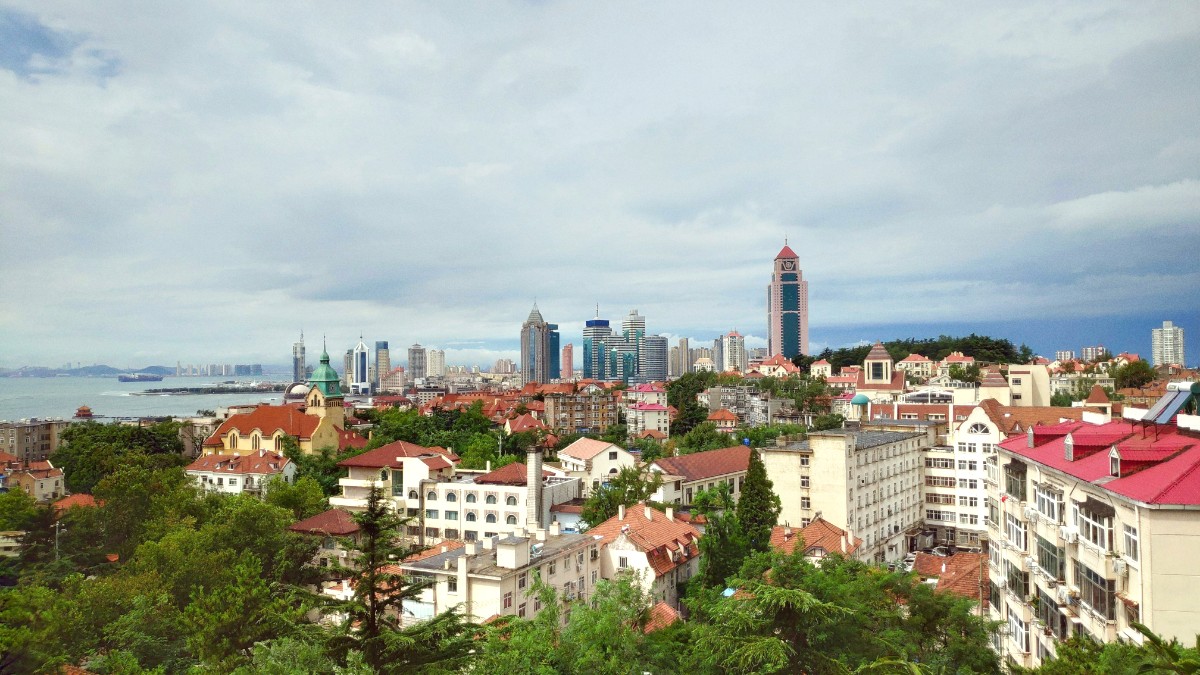
Shandong, China
The city welcomes you with wide boulevards, picturesque coastal views, and an inviting ambiance. Sunlight often bathes the historic German architecture, casting long shadows across charming streets. Beyond its beautiful facade, Qingdao boasts a thriving local culture, a rich culinary scene focused on fresh seafood, and a relaxed pace of life. This guide helps you navigate its many layers, from its bustling markets to its tranquil mountain retreats, for you to make the most of your visit to this remarkable destination.
Qingdao presents a destination that marries historical influences with modern Chinese vibrancy. Its distinct identity makes it a compelling choice for travelers seeking something different.
Its unique German architecture, inviting beaches, and local life create a distinct experience for every traveler, from history enthusiasts to nature lovers and foodies alike.
Qingdao sits on the south coast of the Shandong Peninsula, directly facing the vast Yellow Sea. This location influences its climate, economy, and everyday life. Jiaozhou Bay cradles a significant portion of the city, providing a natural harbor that contributed to Qingdao's rise as a major seaport. You notice the city's terrain quickly; it is quite hilly, with numerous peaks and slopes that create impressive viewpoints and add to its distinct urban landscape.
The coastline of Qingdao is winding, featuring many natural bays, sandy beaches, and rocky outcrops. This varied shoreline presents diverse opportunities for relaxation and exploration. To the east, the majestic Mount Lao (Laoshan) rises, a dramatic backdrop of green mountains meeting the blue sea. This mountain range, with its unique geological formations and lush forests, provides a stunning contrast to the urban areas.
Directly faces the Yellow Sea, providing coastal breezes and maritime activities.
A natural deep-water harbor for Qingdao's port functionality.
Numerous hills and peaks provide panoramic city and sea views.
Majestic mountains forming a scenic eastern backdrop, with hiking trails.
Sandy shores and rocky formations suitable for relaxation and exploration.
Its waters influence the city's weather, often bringing coastal breezes that temper summer heat. The sea supports a thriving fishing industry, which in turn supplies the city's famous seafood restaurants. Furthermore, the numerous islands scattered near the coast contribute to the scenic beauty and provide habitats for local wildlife.
Qingdao’s urban development integrates with its natural surroundings, balancing modern infrastructure with preserved natural beauty.
This unique geographical position grants Qingdao a rare combination of port city functionality, beach resort appeal, and mountain retreat opportunities.
Qingdao's distinct geography creates a captivating environment for visitors, blending urban and natural elements for a truly unique experience.
Qingdao's story is one of dramatic transformation, from a quiet fishing village to a bustling international city. Its journey truly began in 1898 when Germany leased the area from the Qing Dynasty. This period, lasting until 1914, profoundly shaped Qingdao. German engineers and architects laid out the city's modern plan, creating wide tree-lined streets, sturdy stone buildings, and beautiful villas that still characterize much of the old town. They also established the infrastructure for its port and, perhaps most famously, founded the Tsingtao Brewery. This German influence persists visibly today, presenting a rare glimpse into an unique chapter of China's history.
After World War I, Japan briefly controlled Qingdao before it returned to Chinese sovereignty in the 1920s. This period also left some marks, though less pervasive than the German legacy. Following the establishment of the People's Republic of China in 1949, Qingdao grew into a major industrial and economic hub. It became a center for textiles, manufacturing, and shipping, building on its port capabilities.
From 1898 to 1914, German engineers and architects laid out the city's modern plan, creating wide tree-lined streets, sturdy stone buildings, and beautiful villas.
After 1949, Qingdao became a major industrial and economic hub, a center for textiles, manufacturing, and shipping.
The city leaders recognized the value of its unique blend of European and Chinese cultural heritage, preserving areas like Badaguan.
The city's history remains visible in the very fabric of its streets and buildings, a testament to its dramatic journey.
Qingdao features a distinct relaxed, coastal resort feel, contrasting with other Chinese cities.
Its unique architectural heritage comes directly from its German colonial past.
The Yellow Sea meets the Laoshan Mountains here, creating diverse natural landscapes.
A modern economic hub that balances industrial growth with a commitment to preserving its historical core.
It acts as a strategic entry point for exploring the broader Shandong Province, with abundant local attractions.